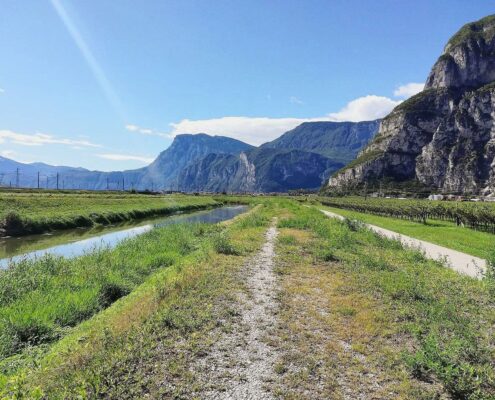 https://greenmarked.it/wp-content/uploads/2024/04/contamination-4286704_1280.jpg
848
1280
Etienne Hoekstra
https://greenmarked.it/wp-content/uploads/2022/01/LOGO-GREENMARKED-SITO-600x600.png
Etienne Hoekstra2024-04-12 06:51:082024-04-12 20:26:47The Dirty Water Dilemma
https://greenmarked.it/wp-content/uploads/2024/04/contamination-4286704_1280.jpg
848
1280
Etienne Hoekstra
https://greenmarked.it/wp-content/uploads/2022/01/LOGO-GREENMARKED-SITO-600x600.png
Etienne Hoekstra2024-04-12 06:51:082024-04-12 20:26:47The Dirty Water DilemmaApril 12, 2024

The health of our oceans and rivers is an indicator of the well-being of our planet. But beneath their serene surfaces, lie complex ecosystems threatened by pollution. In this blog post, we dive into the interwoven threads of sewage pollution, eco-activism and chemical pollution to understand the challenges facing our waterways today.
Surface water
Surface water in the Netherlands contains many chemical substance, in particular many flame retardants. Only 4% of Dutch streams and rivers meet European water quality standards. By 2027, every ditch, river and stream across Europe must comply with the European Water Framework Directive [1].
Sewage Spills
Also on the other side of the North Sea, a worrying development is emerging. Reports indicate a trend of sewage discharges into the rivers and seas of the United Kingdom (UK), raising concerns about the safety of waterways. England and Wales are the only countries in the world to have fully privatised its water and sewage system. Consequently, these companies discharged the equivalent of 450 years of untreated wastewater in 2023, an increase of 54% compared to 2022 [2].
“80% of the world’s sewage is dumped untreated into our oceans” [3]
Sewer overflow poses a serious risk to public health by contaminating drinking water, spreading pathogens through the air, transferring diseases through the food chain, and exposing people to polluted water during recreational activities [4].
There is an urgent need for better environmental monitoring, upgrading water treatment facilities, and improving infrastructure to reduce the spread of diseases, including the risk of Covid-19 transmission. Ensuring public safety requires a concerted effort to enhance the management of water and sewage systems [4]. However, upgrading wastewater treatment plants in England and Wales to remove the chemical pollution will cost roughly €50 billion, approx. 8% of the annual GDP of London [5].
Eco-activism
“The Dirty Protest” stated that they had “enough of all this shit”, and came up with a “petition against shit in our ocean signed with shit from our ocean” [3]:
Drugged fish
If human waste alone was not enough, researchers found a wide variety of prescription and illegal drugs plus a variety of pesticides in coastal waters and marine organisms [6]. Sewage treatment plants do not filter these chemicals out, as they were never designed for it [5]. Consequently, wildlife living in rivers and coastal waters where sewage is discharged are exposed to cocktails of drugs [6].
“In the marine life we’re finding they’re full of drugs, they’re full of contraceptive pills, anti-depressants, anti-anxiety medication, every single marine species we’ve looked at so far is full of cocaine.”
[Professor Alex Ford – University of Portsmouth]
Drug exposure affects not only the fish themselves but also their offspring. In fish, addiction can be inherited over several generations. This can have long-term effects on ecosystems even if the problem were to be solved now. However, the wider effects of those drugs remain largely unknown [5].
Regulation
UK law relating to sewage discharges largely derived from EU law, but its language is imprecise. Moreover, key legislation in this area has been costly and difficult to apply. As mentioned above, the Netherlands is among many EU countries failing to timely implement EU wastewater legislation [7].
The EU recognised that there are still sources of pollution that are not yet adequately addressed by the current regulation, including sewage spills. In March 2024, the Council and the European Parliament reached a provisional agreement to review the urban wastewater treatment directive. The directive is among the key deliverables under the EU’s zero-pollution action plan [8].
If we want to tackle the amount of drugs in our waterways, we need to do more to improve filtration in sewage treatment plants and force water companies to take more responsibility for ensuring that wastewater does not harm wildlife [5].
ARTÍCULOS RELACIONADOS:
References
Pulse aquí para ampliar las referencias[1] Marée, N. (2024, 9 April). Only 4 per cent of waters meet standard for chemicals – ‘flame retardants’ in particular prove problematic polluters (Translated by Author). Retrieved from https://www.nrc.nl/nieuws/2024/04/09/slechts-4-procent-van-de-wateren-voldoet-aan-norm-voor-chemische-stoffen-met-name-vlamvertragers-blijken-problematische-vervuilers-a4195545
[2] Environmental Agency UK. (2024, 27 March). Event Duration Monitoring – Storm Overflows – Annual Returns. Retrieved from https://www.data.gov.uk/dataset/19f6064d-7356-466f-844e-d20ea10ae9fd/event-duration-monitoring-storm-overflows-annual-returns
[3] Uncommon Creative Studio. (n.d.) The Dirty Protest. Retrieved from https://www.dirtyprotest.org
[4] Sojobi, A. O., & Zayed, T. (2022). Impact of sewer overflow on public health: A comprehensive scientometric analysis and systematic review. Environmental Research, 203, 111609. https://doi.org/10.1016/j.envres.2021.111609
Sauer, N. (2021, 7 July). Fish hooked on meth – the consequences of freshwater pollution. Retrieved from https://theconversation.com/fish-hooked-on-meth-the-consequences-of-freshwater-pollution-163756
[5] Owen, R., & Jobling, S. (2012). The hidden costs of flexible fertility. Nature, 485(7399), 441-441. https://doi.org/10.1038/485441a
[6] Press Office Brunel University London. (2023, 9 June). More than 50 chemicals discovered in water off Hampshire and West Sussex coasts. Retrieved from https://www.brunel.ac.uk/news-and-events/news/articles/More-than-50-chemicals-discovered-in-water-off-Hampshire-and-West-Sussex-coasts
[7] Haigh, N. & Farmer, A. (2023, 22 December). Sewage Discharges: Interaction between UK and EU Law continues post-Brexit. Institute for European Environmental Policy UK. Downloaded from https://ieep.uk/incubator/wp-content/uploads/2024/01/Sewage-Policy-Briefing_Nigel-Haigh-Andrew-Farmer_January-2024-1.pdf
[8] Council of the EU (2024, 1 March). Urban wastewater: Council and Parliament reach a deal on new rules for more efficient treatment and monitoring. Retrieved from https://www.consilium.europa.eu/en/press/press-releases/2024/01/29/urban-wastewater-council-and-parliament-reach-a-deal-on-new-rules-for-more-efficient-treatment-and-monitoring/
Imagen de portada y vista previa Contaminated Lake water. Copyright-free photo by yogendras31 en Pixabay










